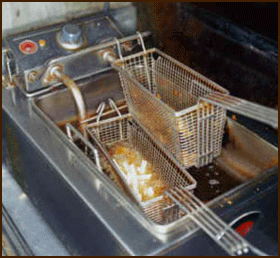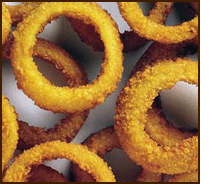

Deep-Frying: What It Is & How It Works
Deep-frying is a cooking method which involves submerging food in pre-heated deep fat or oil at high temperature (generally between 175 -195°C). The food is deep-fried until cooked and golden brown, drained well and served. No water is used in this process, thus it is considered a dry-cooking method. The aim of deep-frying is to ensure that the inside of a food is cooked in the same length of time as the exterior requires to be browned, and is an extremely fast way of cooking foods because of the high temperatures involved and the high rate of heat transfer. One of the main advantages of deep-frying is that it seals food quickly and produces tasty and interesting texture contrasts and crispness.
Most deep-fried foods (other than potatoes or poultry with the skin intact) are given a coating of batter or breading prior to frying by coating them with milk and flour, egg and crumbs. This coating allows the outside of the food to become crispy and browned while protecting the surface of the food from intense heat. The food inside cooks by conduction or indirect heat, and becomes tender, moist, and steamed. The food cooks because the hot oil heats the water within the food, and steams it from the inside out. If performed properly, deep-frying does not make food excessively greasy because the moisture in the food repels the oil. As long as the oil is hot enough and the food is not immersed in the oil too long, oil penetration will be confined to the outer surface layer and none will actually reach the center of the food.



A few fried favorites (left to right): Breaded Onion Rings, Fried Chicken, and (believe it or not) Deep-Fried Oreos!